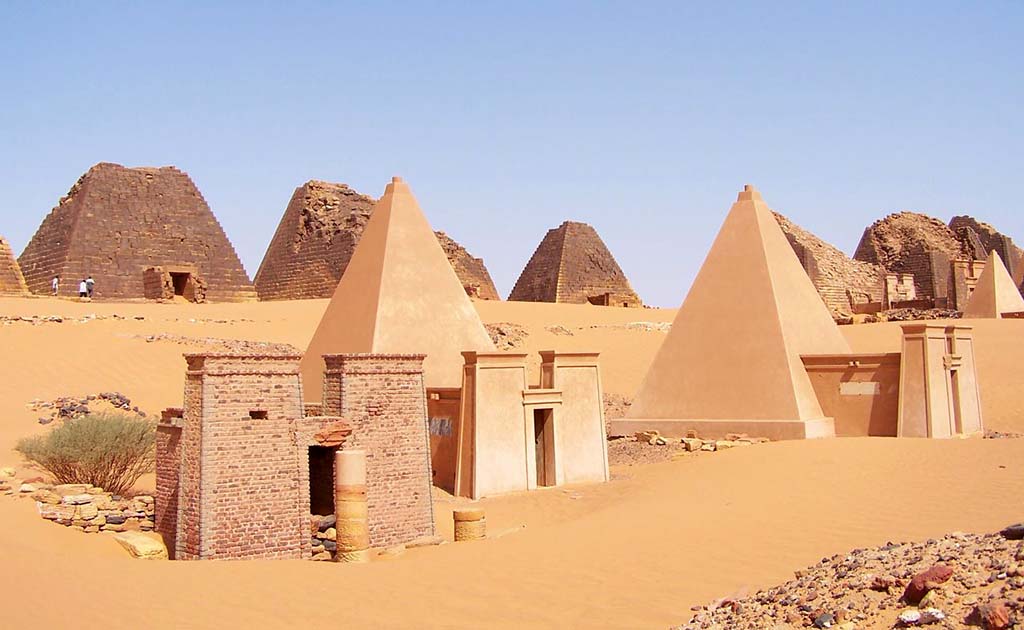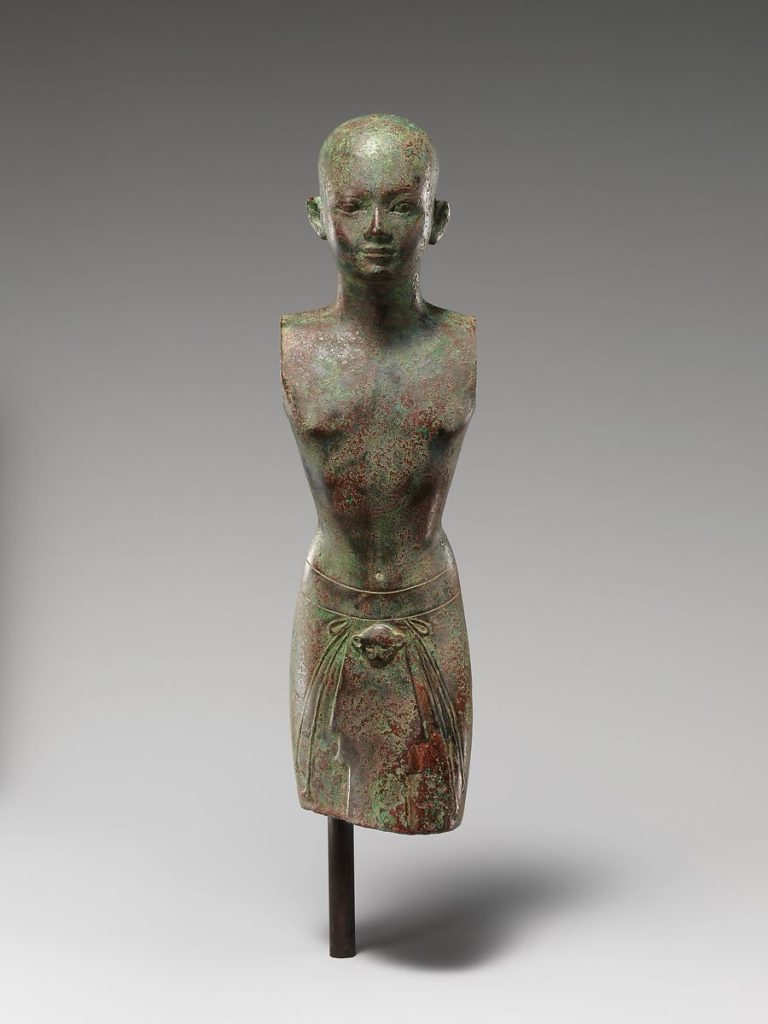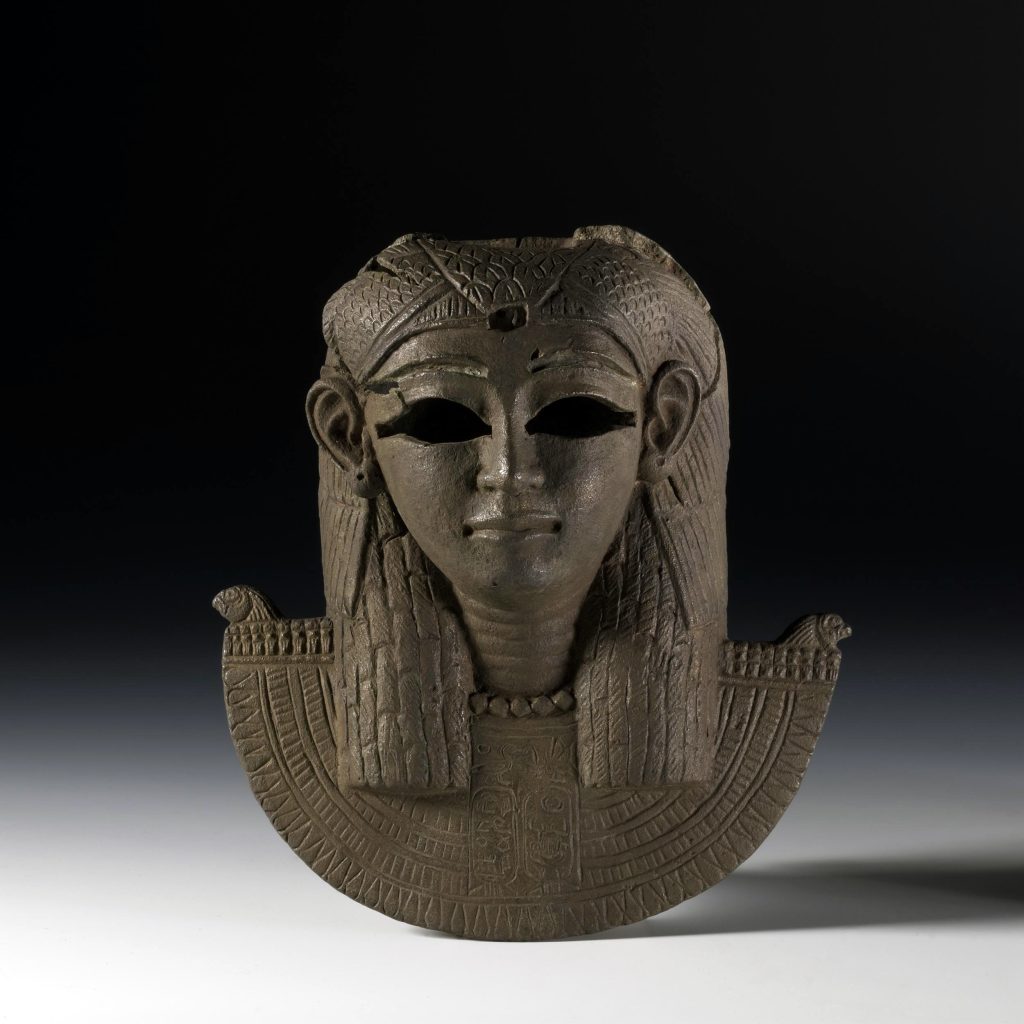អរិយធម៌គុស ( Kush civilization ) ឬ ហៅម៉្យាងទៀតថា អរិយធម៌នៃអាណាចក្រគុស (Kush empire civilization) ដែលជា អរិយធម៌ចំណាស់មួយនៅក្នុងទ្វីបអាហ្រ្វិចបន្ទាប់ពីអរិយធម៌អេហ្ស៊ីប។ អរិយធម៌នេះកើតឡើងចេញពីតំបន់នូប៊ីន (Nubian) ដែលជាតំបន់បុរាណមួយដែលសិ្ថតនៅខាងជើងនៃទ្វីបអាហ្វ្រិចដែលលាតសន្ឋឹងពីទន្លេនីល រហូតដល់សមុទ្រក្រហម ហើយសព្វថ្ងៃស្ថិតនៅខាងជើងនៃប្រទេសស៊ូដង់ (Sudan) និងស្ថិតនៅខាងត្បូងនៃប្រទេសអេហ្ស៊ីប។ ទីក្រុងសំខាន់ៗនៃអាណាចក្រនេះរួមមាន ទីក្រុង Napata និងទីក្រុង Meroë ដែលអ្នកស្រាវជ្រាវផ្សេងៗបានបង្ហាញថាអរិយធម៌នេះ មានឥទ្ឋិពលខ្លាំងក្លានៅក្នុងតំបន់នៅរវាងស.វ.ទី ៣មុនគ.ស. ហើយក៏ជាតំបន់នៃពាណិជ្ជកម្មដោះដូររវាងតំបន់អាហ្វ្រីក ឧបទ្វីបអារ៉ាប់ និងតំបន់សមុទ្រមីឌីទែរ៉ាណេ ជាពិសេសការជួញដូរលើឧស្សហកម្មដែក និងមាសជាដើម។ ទីក្រុងទាំងនោះស្ថិតនៅតំបន់វាលខ្សាច់សាហារ៉ា។ អរិយធម៌នេះក៏មិនខុសអ្វី ពីអរិយធម៌អេហ្ស៊ីបនោះទេ ដោយសារជ្រើសរើសយកទីតាំងតំបន់ទន្លេនេះ គឺស្របទៅតាមវិស័យកសិកម្ម នេសាទ និងការចិញ្ចឹមសត្វ ដែលពឹងផ្អែកទៅលើប្រភពទឹក។
សង្គមអរិយធម៌នៅក្នុងអាណាចក្រគុស ក៏មិនខុសអ្វីពីអាណាចក្រអេហ្ស៊ីបនោះទេពោលគឺ ពួកគេទទួលឥទ្ឋិពលពីអរិយធម៌អេហ្ស៊ីបទាំងការប្រើប្រាស់ប្រព័ន្ធ នយោបាយ សាសនា ភាសា និងអក្សរ ដូចគ្នាទៅនឹងអរិយធម៌អេហ្ស៊ីបដែរ គឺដូចនឹងអាណាចក្រអេហ្ស៊ីបថ្មីមួយអញ្ចឹងដែរ។ មនុស្សក្នុងអរិយធម៌នេះគោរពប្រតិបត្តិអទិទេពដូចនឹងមនុស្សក្នុងអរិយធម៌អេហ្ស៊ីបដែរ។ សំណង់ប្រាសាទពីរ៉ាមីតនៅតែបន្តកសាងជាច្រើននៅតាមទីក្រុងសំខាន់ៗនៃអរិយធម៌គុស ប៉ុន្តែទំហំ និងកម្ពស់នៃសំណង់ប្រាសាទហាក់បីដូចជាមានទំហំតូច និងទាបជាងសំណង់ប្រាសាទពីរ៉ាមីតក្នុងអរិយធម៌អេហ្ស៊ីប។ តំបន់ភ្នំ Gebel Barkal ដែលជាទីតាំងនៃទីក្រុង ណាប៉ាតា (Napata) (១៤០០ឆ្នាំ ទៅ ១១០០ឆ្នាំមុនគ.ស.)។ នៅក្នុងទីក្រុង Napata មានសំណង់ប្រាសាទប្រមាណជាង ១៣ ដែល៣ទីតាំងត្រូវបានគេដឹងថា ជាវាំង និងសំណង់ប្រាសាទពីរ៉ាមីតផ្សេងៗទៀត។ នៅឆ្នាំ ២០០៣ តំបន់នៃភ្នំនេះត្រូវបានដាក់បញ្ចូលក្នុងសម្បិត្តិបេតិកភណ្ឌពិភពលោក និងសំណង់ប្រាសាទខ្លះៗត្រូវបានជួសជុលដោយគម្រោងសំណង់ពិភពលោក។ ទីក្រុងផ្សេងទៀតដែលមានឈ្មោះថា មេរ៉ូ ( Meroe) ដែលស្ថិតនៅចន្លោះទន្លេ នីល (Nile) និងទន្លេអបារ៉ា (Atbara) ហើយក៏ជាទីក្រុងដ៏សំខាន់នៃអរិយធម៌នេះ ដែលជាទីក្រុង ផ្នែកនយោបាយ សាសនា និងរដ្ឋបាលរវាងស.វ.ទី៨ ដល់ស.វ.ទី៤មុនគ.ស. ដោយអ្នកស្រាវជ្រាវបានរកឃើញនូវទីតាំងបញ្ចុះសពនៅក្នុងទីក្រុងនេះ។ នៅទីនោះអ្នកស្រាវជ្រាវបានរកឃើញមានសំណង់ប្រាសាទពីរ៉ាមីតប្រមាណជាង ២០០។ រាល់សំណង់ស្ថាបត្យកម្មទាំងនោះ វាបានបង្ហាញឱ្យយើងឃើញអំពីការីកចម្រើនផ្នែកវប្បធម៍ និងគំនិតនៃមនុស្សក្នុងអាណាចក្រគុស ដែលទាក់ទងនឹងចំណេះដឹងខ្ពស់ ផ្នែកគណិតវិទ្យាក្នុងការគណនា ទម្ងន់ ប្លង់ និងលំហ ដើម្បីកសាងប្រាសាទពីរ៉ាមីត និងបច្ចេកទេសក្នុងការសំណង់សាសនាផ្សេងៗ។ វត្ថុសិល្បៈផ្សេងៗដែលត្រូវបានរកឃើញរួមមាន បដិមា កុលាភាជន៍ វត្ថុលោហៈធាតុ ក្នុងអរិយធម៌ គឺទទួលឥទ្ឋិពលស្ទើរតែទាំងស្រុងពីអរិយធម៌អេហ្ស៊ីប ដែលស្ថិតនៅព្រំដែនក្បែរខាងរវាងអរិយធម៌ទាំងពីរនេះ។
ភាពរីកចម្រើននៃអាណាចក្រគុសក៏ត្រូវបានដួលរលំនៅស.វ.ទី៤មុនគ.ស. ដោយការឈ្លានពានទឹកដីពីសំណាក់អាណាចក្រ Aksum ដែលមានឥទិ្ឋពលខ្លាំងក្លាជាងអរិយធម៌គុស។ តាមរយៈការបង្ហាញពត៌មានខាងលើនេះ បានបង្ហាញថា អរិយធម៌គុស ប្រៀបបានដូចនឹងអរិយធម៌អេហ្ស៊ីបទីពីរ និងមានឥទ្ឋិពលខ្លាំងក្លាលើផ្នែកពាណិជ្ជកម្មជាមួយនឹងឧបទ្វីបដ៏ទៃទៀត ដូចជាការជួញដូរ ឧស្សាហកម្មដែក និងរ៉ែមាសជាដើម៕
—————————————————————–
Kush civilization
Kush civilization or also called the Kush empire is one of the oldest civilizations in Africa after the Egyptian civilization. This civilization originated in the Nubian region, an ancient region located north of Africa that stretches from the Nile to the Red Sea and is presently north of Sudan and South of Egypt. The major cities of this empire include Napata and Meroë, which researchers have indicated that it had a strong influence in the region between the third century. It is also an area of trade between Africa, the Arabian Peninsula, and the Mediterranean sea especially trades in the iron and gold industries. These cities are located in the Sahara. This civilization is no different from the Egyptian civilization because the choice of the location of this river is parallel with agriculture, fishing, and animal husbandry that depend on water sources.
The society of civilization in the Kush Empire was no different from the Egyptian Empire, that is, they were influenced by the Egyptian civilization in the same political system, religion, language, and letter as the new Egyptian civilization, just like the new Egyptian empire. The people of this civilization obeyed the deities as Egyptian civilization. The pyramid structures have continued to construct in many of the major cities of the Kush civilization, but the size and height of the temples seemed smaller than the pyramids in Egyptian civilization. Gebel Barkal mountain region is the location of Napata city. In Napata, there are more than 13 temples, three of which are known as palaces and other pyramids.
In 2003, the area of the mountain was designated on the World Heritage List, and some of the temple structures were restored by the World Construction Project. Another city, Meroe, located between the Nile and Atbara rivers, was also the center of this civilization, a city of politics, religion, and administration between the 8th to 4th centuries which researchers have found a burial site in the city. In addition, researchers found more than 200 pyramid structures. All of these architectural structures show us the cultural and intellectual development of the people of the Kush Empire, which involved a high level of mathematical knowledge in calculating the weight, plan, and space for building pyramids and other religious construction techniques. There were various artifacts found, including statues, ceramics, and metal in civilization, which are almost entirely influenced by Egyptian civilization bordering these two civilizations.
The rise of the Kush Empire also collapsed in the 4th century. By invading the territory from the Aksum Empire, which had a stronger influence than the Kush civilization. Based on the information above shows that the Kush civilization is similar to the second Egyptian civilization and has a strong influence on trade with other peninsulas, such as trade in the iron and gold industry.
អត្ថបទដើម៖ លោក អេង តុលា










